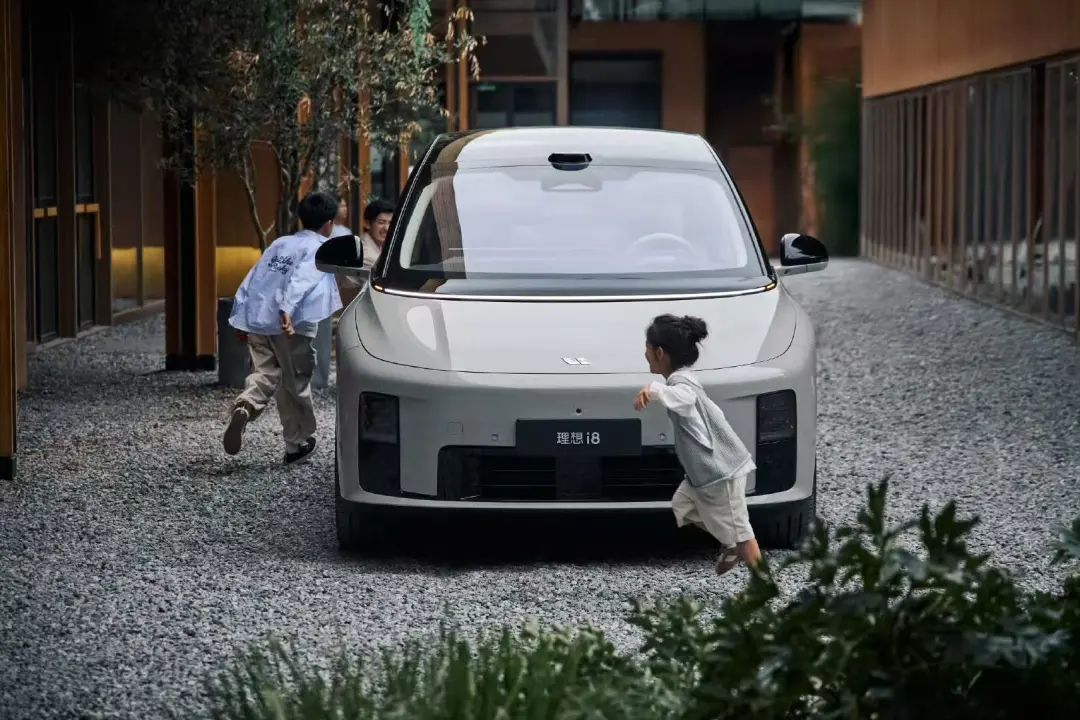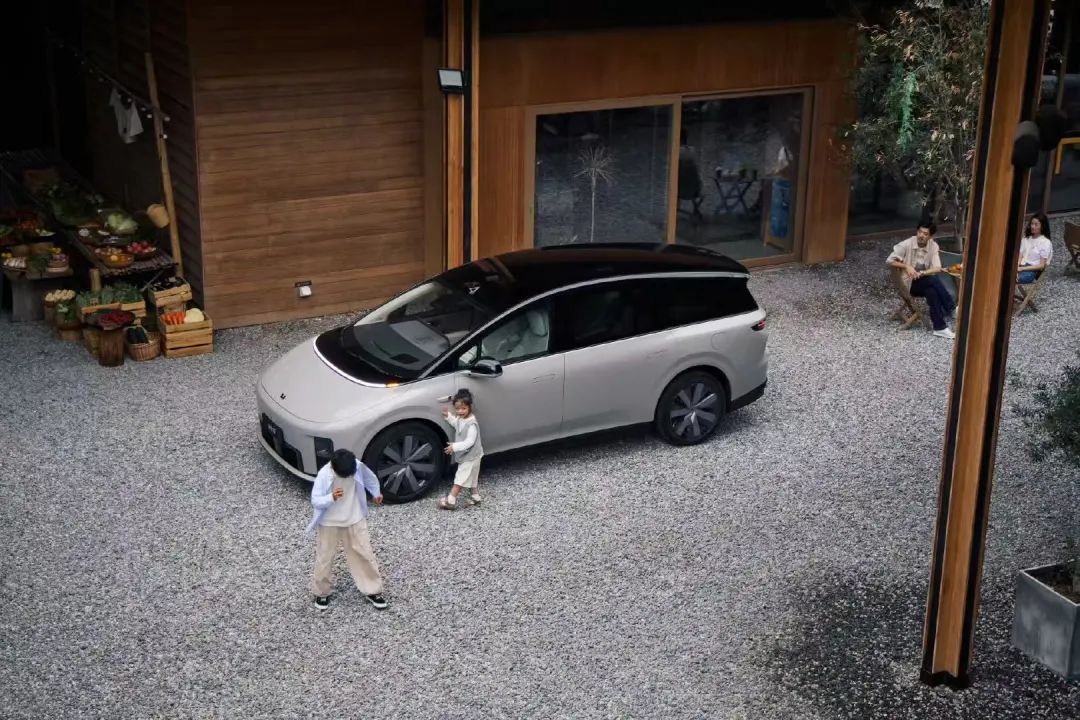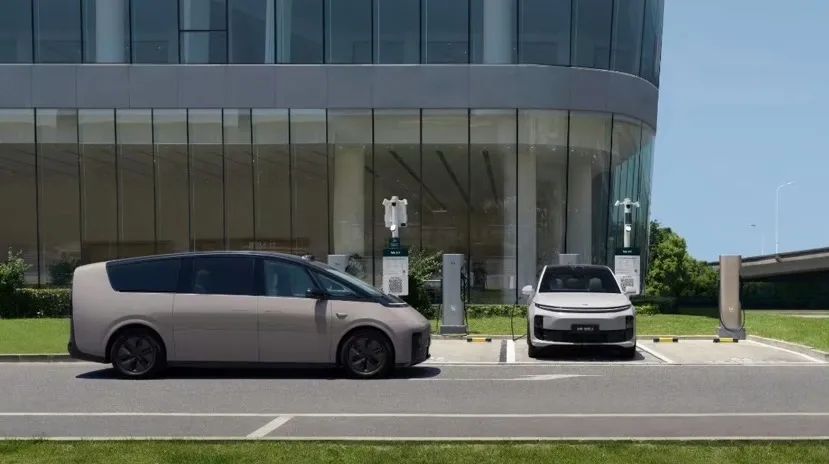Ideal's Breakthrough in the >RMB 200,000 Pure Electric SUV Market: Lei Jun Offers Insights, Will the i8 be a Game-Changer?
![]() 07/15 2025
07/15 2025
![]() 466
466
Colleague H, a family man with two children, made the switch to an Ideal L8 last year. Prior to owning the L8, he drove a fuel SUV, which has since been relegated to the garage. The children prefer the L8 as they can watch animations on the journey, and Colleague H himself avoids the hassle of visiting gas stations, rarely needing to refuel his L8. He installed a home charging station in his designated parking spot and charges the L8 daily, aiming for fully electric travel. To optimize costs, he schedules charging during off-peak hours from 10:00 pm to 8:00 am, when electricity rates in Guangzhou are as low as 0.385 yuan per kWh.

Colleague H's transformation from a fuel car owner who wasn't concerned about fuel efficiency (he used to enjoy spirited driving) to a new energy car enthusiast who seeks out the lowest electricity prices is not unique. My friends Z and R have had similar experiences, transitioning from fuel to electric cars and representing Ideal's current L-series car owners. They have become more frugal with their car usage and increasingly accustomed to electric-only driving, with higher expectations for the range of pure electric vehicles.
The extensive data on driving habits and charging frequencies of L-series users underscores Ideal's motivation to develop pure electric models. The demand for pure electric vehicles is surging, and Ideal aims to create a dual growth trajectory.
On one hand, an increasing number of REV and PHEV users across the market have come to expect longer electric ranges after experiencing the convenience of electric travel. When it comes time to replace their vehicles, they opt for EVs. This shift in consumer preference is evident in industry data. For instance, among Zero Run Auto's models that offer both REV and EV options, EV sales have gradually surpassed REV sales, achieving a significant lead. Consequently, on the B10, Zero Run Auto abandoned the development of extended-range vehicles, focusing solely on pure electric models, which proved to be a hit upon launch.

Rumored interior of the Ideal i8
On the other hand, the L-series models face stiff competition from across the industry. Sales of AITO M8/M9 have consistently outpaced those of Ideal L8/L9. AITO M8 boasts monthly sales of 20,000 units, while M9 maintains a robust sales figure of 10,000 units per month. In contrast, the combined monthly sales of L8/L9 have averaged below 5,000 since 2025. Additionally, models like Lynk & Co 900, Denza N9, and SL03 are eyeing the large 6-seater new energy SUV market. As Ideal grapples with threats to its core market, it urgently seeks new growth avenues.
Currently, the >RMB 200,000 6-seater pure electric SUV market lacks popular models. Sales of NIO ES8, Hyper HL, Audi Q5 e-tron, and AITO M9 (pure electric version) are sluggish, with monthly sales hovering below 2,000 units, failing to establish a dominant presence. This market resembles a blue ocean, and Ideal may view it as an opportunity, hence the introduction of the 6-seater i8 for market testing.
However, in the current pure electric SUV market above RMB 200,000, whether 6-seater or 5-seater, only Tesla Model Y has achieved widespread success, with Xiaomi YU7 trailing closely. Selling pure electric SUVs above RMB 200,000 is no easy feat. Multiple large pure electric SUVs from AITO, ZEEKR, NIO, IM Motors, Hyper, and XPeng struggle with sluggish sales. It's not that the electric driving experience in these models is lacking.
The primary reason for the market's reluctance towards large SUVs is range anxiety. For large pure electric SUVs to achieve a range exceeding 650km, the battery capacity typically needs to reach 100kWh (compared to around 60kWh for smaller and medium-sized electric models). When driving long distances with a family, the curb weight nears 3 tons, and the actual range on highways in winter and summer often falls below 400km, necessitating frequent charging stops.

Moreover, refueling times for such large pure electric SUVs are longer than for smaller and medium-sized SUVs. As of this year, there are fewer than 20,000 charging stations nationwide capable of 5C charging for 100kWh battery packs, with less than 1,000 deployed in national highway service areas. Imagine traveling long distances in winter or summer with the entire family, enduring extreme temperatures, and waiting for half an hour or even an hour to charge at a service area or charging station. During holidays, highway congestion can further extend waiting times, making the experience unbearable for many users. When purchasing large 6-seater SUVs, users aim to accommodate more family members. The range anxiety associated with pure electric vehicles tilts users towards large extended-range and PHEV models. Hence, AITO abandoned the development of pure electric models for the M8 after the M9 experiment faltered.
Although the market sees a growing number of users demanding pure electric travel, convincing them to part with their hard-earned money remains challenging. Car companies must address the issue of rapid refueling. Besides batteries that support 5C or even megawatt fast charging, car companies must also invest heavily in building more supercharging stations. This explains why we've witnessed Xiaopeng, NIO, and Ideal simultaneously unveiling their supercharging station construction plans alongside new model introductions in the past two years, albeit on a modest scale.
Ideal has currently established 15,655 charging stations, of which only 1,575 support 5C supercharging. It plans to complete the construction of 4,000 supercharging stations by the end of 2025, with around 16,000 stations supporting 2C-5C supercharging. However, this number is still insufficient. To ensure the success of the i8 and subsequent pure electric models, Ideal needs to invest more funds (each liquid-cooled supercharging station costs approximately RMB 200,000) in building supercharging stations and addressing the refueling challenges of large pure electric models. This will convince more users to opt for large pure electric SUVs like the i8 without hesitation.

The i8 will go on presale on July 17 and officially launch on July 29, positioned as a mid-to-large SUV with dimensions comparable to the L8. Given industry trends, the BOM cost of EV models generally surpasses that of REV models. Therefore, the Ideal i8's price is expected to be higher than the current L8, starting at around RMB 350,000.
However, this pricing may complicate the market positioning of the Ideal i8. On one hand, pure electric models, constrained by range anxiety, may not be favored by the market in the short term and are more expensive than comparable REV models. On the other hand, the starting price of the large 6-seater Ledo L90 is only RMB 279,900, with the battery leasing plan starting at RMB 193,900. Currently, it's challenging for the i8's large space and low energy consumption to overshadow range anxiety and impress users as key strengths, especially since models at this level offer decent space experiences.
The Ideal i8 must compete with REV users while also addressing range anxiety concerns. Sales may not necessarily surpass those of the current L8. However, in the niche market, an attractive price could present an opportunity for the i8 to become a hit. Considering the pricing challenges faced by the previous MEGA, I believe that the i8 this time around should demonstrate sufficient sincerity.







